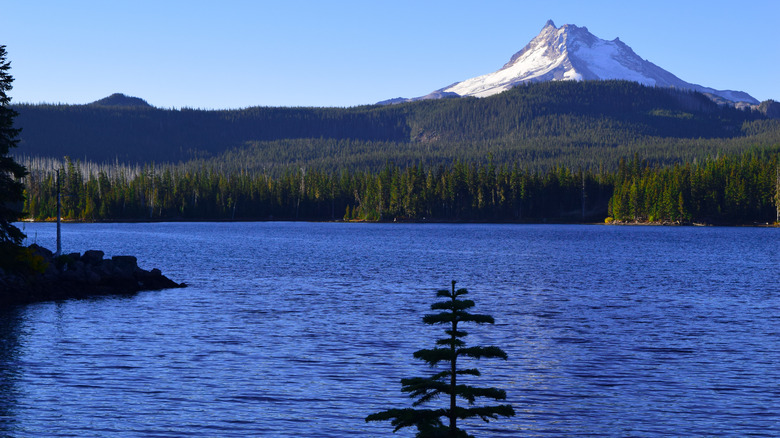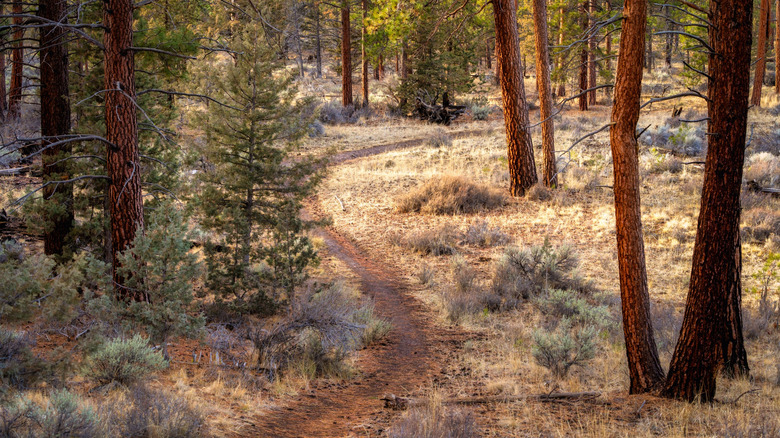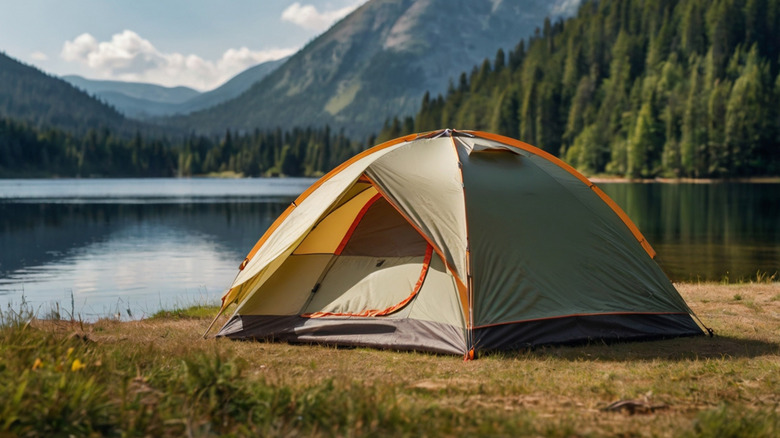A Secret Glistening Oregon Lake Offers The Perfect Uncrowded Camping And Swimming Getaway
Oregon's diverse topography across its 98,000 square miles means there's a lot to offer a visitor for outdoor exploration. This includes 1,400 named lakes, including two located in the expansive Mount Hood National Forest: the popular Trillium Lake, one of the state's most iconic alpine lakes and a scenic jewel for camping and mountain views and Lost Lake, a dazzling lake that's a total outdoor paradise.
But if you head south from these well-known lake attractions, there is a secret, glistening lake primed for camping and swimming, but without the crowds. Marion County's Gifford Lake, located between Oregon's two highest peaks (Mount Hood and MountJefferson) is among the 200 lakes which make up the Olallie Lake Scenic Area portion of the national forest's 1 million acres.
With views of the Olallie Butte from the east and Twin Peaks to the south, Gifford Lake sits at an elevation of 4,250 feet and encompasses 9 acres, with a maximum depth of 56 feet. The closest town is Detroit, Oregon, which is about 2.5 hours south of Portland; to get there, you'll embark on a hike at the end of a tough gravel road. The hike, which is unmarked at most points, ranks as moderate, according to the Forest Service website.
In 2020, the Lionshead fire devastated much of the remote area surrounding Gifford Lake and created challenging and frequently changing terrain, according to The Oregon Hikers Field Guide. You'll want to first check with forest rangers at the Olallie Lake Guard Station for guidance in this remote area, but your efforts will be rewarded with a secluded swimming spot and backcountry camping.
How to experience the swimming paradise of Gifford Lake
With any secret destination — especially one accessible only on foot — the challenge can be finding and staying on the right path. There are also differing opinions on hike length, starting points and route directions. The Oregon Hikers Field Guide provides step-by-step directions and an online map on its website, starting at Lodgepole Trail #706, also known as Lower Lake Campground Trailhead.
According to the site Portland Monthly, an easy one-mile trek to the lake is possible from the Lower Lake Trailhead, but along a hard to navigate route that includes veering left at a four-way trail intersection, aided by a tree and overgrown trail to the lake. Again, you may want to consult with forest service rangers, local hiking groups, and other locals before the excursion.
There are some other longer and larger trails which pass through Gifford Lake. The 5.6-mile-long Olallie North Loop Hike , which is ranked as moderate and features a 955-foot elevation gain, starts from the Lower Lake Trailhead and ends at Top Lake. There's also the 11.9-mile, moderate Olallie Meadows-Olallie Lake Loop Hike, featuring an 1,895-feet elevation gain, and which begins at Olallie Meadows Trailhead and ends at Olallie Lake. Both of these hikes are best attempted from summer into fall, keeping in mind the potential for challenging, post-fire recovery conditions. Once you've found it, taking a dip in the crystal clear waters of Gifford Lake can provide a respite from city life.
Set up camp at Gifford Lake
If you're not ready to return to city life, then consider pitching your tent alongside Gifford Lake for a night of stargazing. The first-come-first-served campground would be politely considered rustic — no services — but it's also close to the water's edge and affords a stellar view. You'll need to pack the essentials, including food, water, mosquito repellent, and of course, a sense of adventure and some of the best hiking gear and best backpacks for camping. The Forest Service website notes that nearby Lost Lake Campground has remain closed since the fire in 2020 as it undergoes rebuilding.
The Olallie Lake Guard station also features a four-room wilderness cabin, which can sleep eight people (guests must provide their own bedding), but has a limited supply of water and a nearby vault toilet. With the cabin located at a 5,000-foot elevation, much of the terrain is not passable during winter months, so the best time of year to visit the region is spring and summer. If remote camping isn't your style, you can book one of 10 rustic cabins at the Olallie Lake Resort, which available seasonally from June through September. Reservations open each year in January, so you will want to book early.


